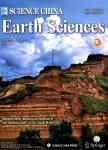Long-term seismic network in South China Sea by floating MERMAIDs
作者机构:Department of Ocean Science and EngineeringSouthern University of Science and TechnologyShenzhen 518055China Southern Marine Science and Engineering Guangdong Laboratory(Guangzhou)Guangzhou 511458China School of Earth and Space SciencePeking UniversityBeijing 100871China
出 版 物:《Science China Earth Sciences》 (中国科学(地球科学英文版))
年 卷 期:2023年第66卷第9期
页 面:1979-1993页
核心收录:
学科分类:081801[工学-矿产普查与勘探] 08[工学] 0818[工学-地质资源与地质工程] 0708[理学-地球物理学]
基 金:supported by the NSFC Open Research Cruise (Cruise No. NORC2021-08) funded by Shiptime Sharing Project of the NSFC supported by the National Natural Science Foundation of China (Grant No. 41890814) the Southern Marine Science and Engineering Guangdong Laboratory (Guangzhou)
主 题:South China Sea MERMAID Floating seismic network Earthquake identification Seismic data coverage
摘 要:Seismic data coverage in ocean regions is sparse,and it is highly challenging to build long-term continuous seismic networks in the oceans due to the restrictions related to the shortage of instruments and great costs.The lack of data coverage limits effective seismic imaging of deep mantle structures beneath the oceans,which cover 70%of the Earth’s surface.The newly developed Mobile Earthquake Recorder in Marine Areas by Independent Drivers(MERMAID)can drift with ocean currents at a specified depth while recording seismic signals.The Southern University of Science and Technology(SUSTech)launched 10 MERMAIDs in the South China Sea(SCS)in May 2021 that formed the South China Sea Floating Seismic Network(SCS-FSN).We analyzed the one-year-long records of the SCS-FSN,identifying 372 cataloged earthquakes and acquiring 1,015 high-quality travel time data.By analyzing the records of earthquakes with magnitudes above 7.0 and conducting synthetic waveform calculation,we found that,in addition to the epicentral distance and earthquake magnitude,the earthquake identification ability of the network is also affected by the focal mechanism,sea condition,seafloor relief,and MERMAID working state.Although the recognition rate of the SCS-FSN is only 16%for earthquakes with magnitudes above 5.5 and epicentral distances less than 90°,this network is expected to collect more than 5,000 high-quality travel time data during its five-year battery life.These new data will significantly improve the seismic data coverage,compensating for the lack of long-term continuous seismic network observations in the SCS.Most importantly,with this experiment,we are confident that setting up well-designed floating seismic networks in the world’s three oceans could solve the world-class problem of the lack of effective seismic data coverage beneath ocean regions.



